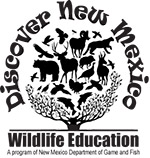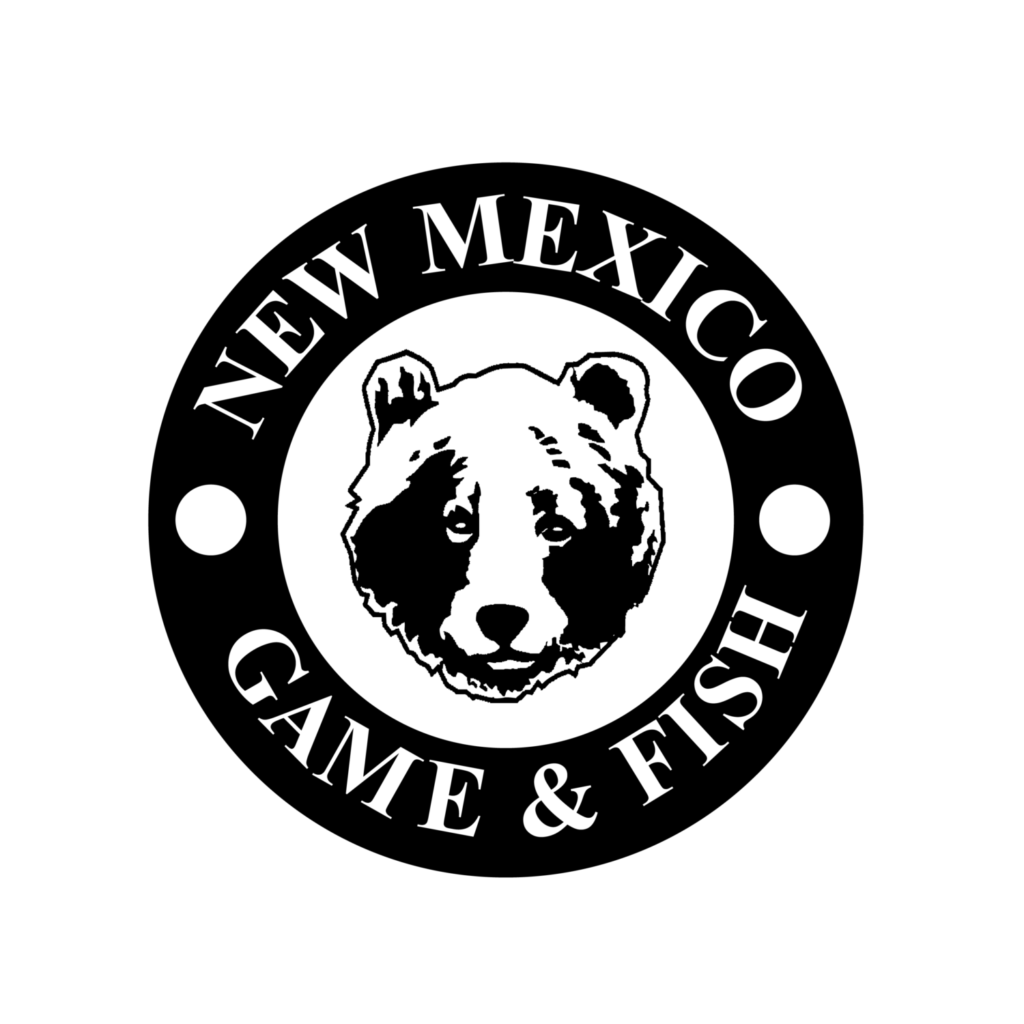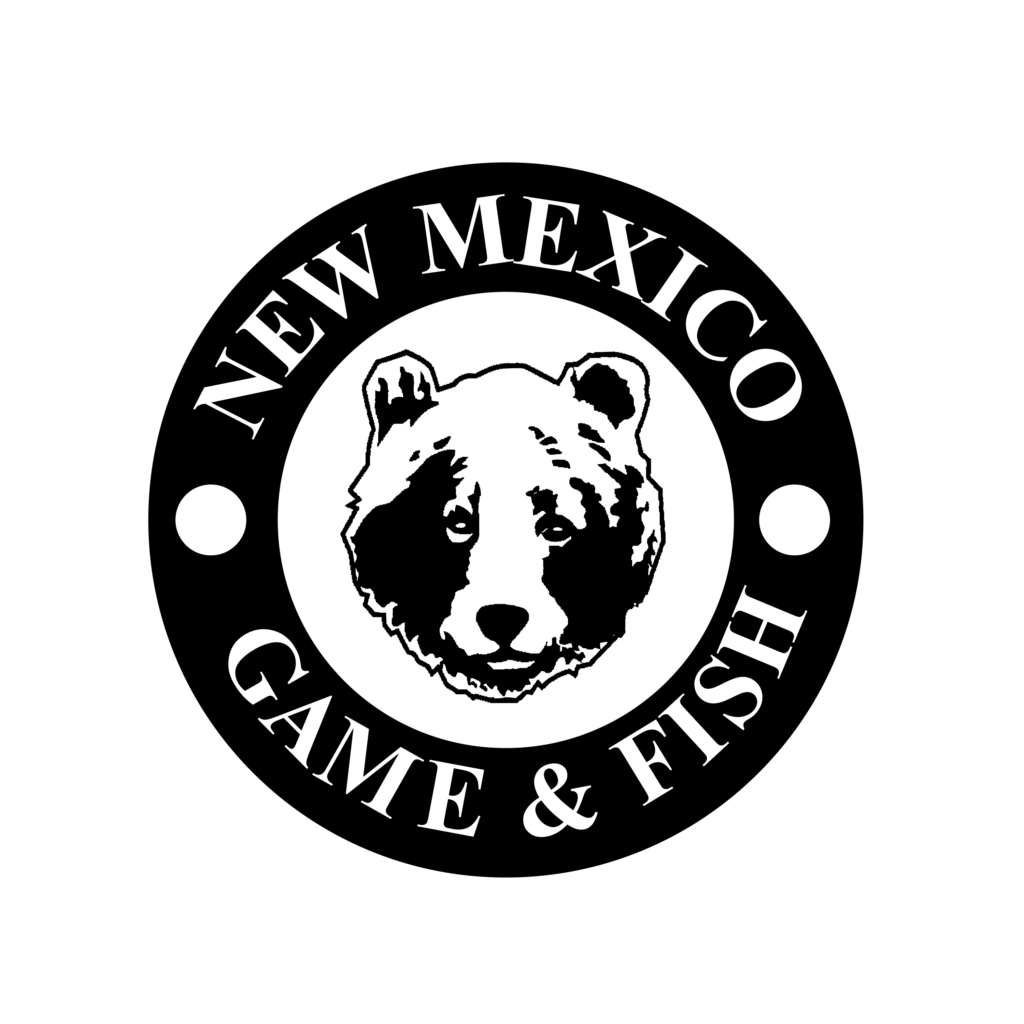Discover New Mexico Glossary

Search and sort glossary of terms for vocabulary words found in our Wildlife Education curriculum.
| Term | Definition |
|---|---|
| Adaptations | an alteration or adjustment in structure of habitats by which a species or individual improves its condition in relationship to its environment. |
| Agile | marked by ability to move with quick, easy grace |
| Algae | simple plants that can range from microscopic to large seaweeds, such as giant kelp. |
| Angling | fishing with a rod, reel, fishing line, and bait, fly or artificial lure. |
| Aquatic invasive species (AIS) | terrestrial or aquatic species that are not native to an area or habitat and that are introduced by humans, animals or by natural means, such as wind or water. |
| Aquatic invertebrates | organisms without backbones, living in water systems - part of aquatic food webs. |
| Ballast | heavy material that stabilizes a ship. |
| Biodiversity | the variety of life forms in a given area. |
| Browse | the act of grazing or looking for vegetation to feed on, common with hooved herbivores. |
| Camouflage | coloration or pattern to conceal from danger for predatory advantage. |
| Carnivore | an animal that eats meat or other animals. |
| Carrying capacity | the maximum number of individuals that a given habitat can support without negative effects. |
| Catch-and-release | a practice used in fishing in which fish are released after being caught, in order to conserve fish populations. |
| Census | procedure of systematically acquiring and recording information about members of a given population. |
| Circumference | the linear distance around the edge of a closed curve or circular object. |
| Competition | the simultaneous demand by two or more organisms for limited environmental resources, such as nutrients, living space, or light. |
| Condensation | water molecules that have evaporated combine with dust, pollen and smoke in the air to form clouds. When the clouds cool, the vapor becomes liquid. Condensation can occur on the ground as fog. Condensations occurs on the outside of your cold ice tea glass on a hot summer day. |
| Conservation | the use of natural resources in a way that ensures their continuing availability to future generations; the wise and intelligent use or protection of natural resources. |
| Controlled variable | a way in a scientific experiment to control how measurements are taken, samples are collected, and observations are made in order to ensure these are being done the same way every time. |
| Cover | the term cover is partnered with the term space as a habitat component. An example of cover would be any sheltered area that protects animals. In an aquatic habitat fish use deep, shaded pools to rest, hide or watch for food to come their way. |
| Cud | a portion of food that returns to some hooved animals, to be chewed a second time. Common in cattle, goats and sheep. |
| Data | known facts, quantities or information used to draw conclusions from. |
| Defecate | evacuate or empty bowels. |
| Den | constructed or found shelter typically used by bears for winter months. |
| Deposition | natural matter that accumulates in an area; for example soil or rocks that are moved by water. |
| Digitigrade | describes mammal such as cats or dogs that walk on their toes. |
| Dominance | refers to the lead animal or lead male, known as a ram. |
| Dormancy | a period in an organismÕs life cycle when growth, development, and (in animals) physical activity are temporarily stopped. |
| Drought | a prolonged period without rain. |
| Ecology | the science of the interrelations of between living organisms and their environment. |
| Economy | process or system by which goods and services are produced, sold and bought in a country or region. |
| Ecosystem | a natural unit that includes living and nonliving parts interacting to produce a stable system in which the exchange of materials between the living and nonliving parts follows closed paths. |
| Elusive | tending to avoid tracking or following |
| Embryo | an animal in the early stages of development and growth. |
| Encroach / encroachment | move by stealth; to advance beyond usual limits |
| Encroachment of woody vegetation | usually small shrub-like plants that move into an area and overtake grasses. |
| Endangered | in wildlife terms, a species that is in danger of extinction throughout all or a significant portion of its range. |
| Entomology | study of arthropods including insects. |
| Erosion | natural process by which rock and soil are broken loose from the Earths surface at one location and moved to another by wind, moving water, ice and landslides. |
| Evaporate | to convert liquid to vapor-a gas state in the air. |
| Evaporation | occurs when the sun heats water and it becomes vapor that rises into the atmosphere. |
| Expenditures | an amount of money that is spent on something. |
| Extinct | describes an organism that has been removed from existence and no longer survives anywhere. |
| Extirpated | missing from native range but not extinct. |
| Fishing ethics | a set of practices used in recreational fishing that are meant to conserve fish populations and provide a safe environment for all fishers. |
| Food chain | the transfer of food energy from one organism to another as each consumes a lower member and in turn is preyed upon by a higher member. |
| Food energy system | the first part of an ecosystem is the nonliving substance such as air. The second part consists of those organisms that are called producers, or food makers. The third part of this system is called the consumer because it uses the producer for its food. It may in turn be used as food by a secondary consumer. A secondary consumer is eaten by a tertiary consumer. Energy is moved up through this system. |
| Food web | an interlocking pattern of food chains. |
| Forage | refers to vegetation taken naturally by herbivorous animals. |
| Freshwater mussel | Nature's freshwater version of a marine clam, like clams found on the beach. A freshwater mussel is a bivalve mollusk that lives in freshwater and is often called a clam. They have a hard outer shell and are soft on the inside. Mussels move as much as eight gallons of water per day through their internal filtration systems. |
| Gait | describes the way an animal moves: walking, trotting, loping and galloping, hopping and bounding. |
| Gestation | period of time that the female sheep is pregnant. |
| Habitat components | food, water, shelter (cover) and space in proportion—in balance --suitable to needs of animals. |
| Herbivore | an animal that eats plants. |
| Hibernation | a physiologic condition experienced by some animals in the winter, during which the animal goes into a deep sleep, the heart and breathing rates decrease, body temperature decreases, and stored fat is used for energy. |
| Hydrilla | is a submersed plant. It can grow to the surface and form dense mats. It may be found in all types of water bodies. |
| Hydrophytes | aquatic plants that are especially suited for living in water. Many are completely submerged in water, while some are able to float on the surface of the water. Hydrophytes are supported by water and have roots that are small and feathery. These are designed to take in oxygen from the water. |
| Impervious | surface or material that does not absorb water well. |
| Inflow | some of the water that falls to Earth infiltrates the sub soil and rock and can recharge groundwater. |
| Limiting factors | various influences that affect any animal, population of animals or species. For example: food water, shelter, space/cover, space, disease, predation, climate, pollution, hunting, poaching and accidents. Limiting factors affect the overall size of a population. |
| Manipulated variable | a condition in a scientific experiment which will be changed. |
| Mature | fully developed adult. |
| Metabolism | chemical processes that occur within a living organism in order to maintain life. |
| Microorganisms | microbes or organisms that are so small they are microscopic, or invisible to the naked eye. Microorganisms can be single celled or multicellular. |
| Migration | annual movement of birds or other animals from one region or country to another. |
| Mortality | death |
| Mortality | [the quality or state of being alive; the state of being mortal with certainty of death]. |
| Muzzle | nose of sheep or other animal. |
| Native species | a plant or animal species that was produced, grew, or originated in a certain region. |
| Natural resources | include water, soil, plants and animals. |
| Navigate | to move from one place to another; to travel through an area by foot or other means. |
| Nymph stage | this is the aquatic invertebrate life cycle stage after the organism hatches from an egg. It often eats differently than later during its adult stage. It may look very different than the adult stage. The full life cycle is known as metamorphosis. |
| Omnivore | an animal that eats both plants and animals. |
| Persistence and persisting populations | dedication, not giving up and populations that continue to grow |
| Pervious | surface or material that allows water to infiltrate. |
| Plantigrade | describes humans and bears that walk with the soles of their feet flat on the ground. |
| Pneumonia | lung inflammation |
| Poaching | illegal hunting and taking of game animals and wildlife. |
| Population | the number of a particular species in a defined area. |
| Population | refers to the whole heard of animals in any given area |
| Porous | surface or material that has holes, allowing water or air through. |
| Precipitation | liquid in the clouds becomes heavy and gravity pulls the liquid down to Earth as rain or snow. |
| Predation | refers to the act of any predator (the primary predators of bighorn sheep are mountain lions) stalking and killing another animal (prey). |
| Predator | an animal that kills and eats other animals. |
| Prey | animals that are killed and eaten by other animals. |
| Proportionate | a size, number or amount that is directly related to or appropriate for something. |
| Protists | refers to a classification in the Animal Kingdom that includes some unicellular protists and some multicellular algae. There are 50,000 species of protists. A few protists that are often studied in high school biology are amebae and paramecia. |
| Quagga mussle | a freshwater, bivalve mussel. |
| Ratio | relationship of two numbers of the same kind. Ratio can also be relationship of two different objects. |
| Recharge | water that infiltrates the sub soil that then reaches deeper to add to groundwater supplies. |
| Regulations | rules that pertain to fishing and/or hunting and trapping. |
| Reliable | consistently good in quality or performance; able to be trusted. |
| Remnant population | population that existed after a die out |
| Responding variable | a condition in a scientific experiment which will be observed/measured. |
| Runoff | occurs when rain water reaches Earth and flows across the land into lakes, streams and oceans. |
| Rut | the period of time when male sheep fight for harems (groups of female sheep) in order to mate and pass on their genes to the next generation. |
| Scat | fecal material. |
| Sediment | small pieces of matter that settle at the bottom of liquid, soil, sand and materials washed from land into waterways. |
| Solitary | one individual alone |
| Species | a population of individuals that are more or less alike and that are able to breed and produce fertile offspring under natural conditions; a category of biological classification immediately below the genus and subgenus. |
| Spin casting | technique in angling, or fishing with a rod, that uses a spinning lure in order to entice fish to bite. |
| Sport fishing | fishing with a rod, reel, fishing line, and bait, or angling, done for sport or recreation. |
| Sportfish | typically any species of fish that is fished for sport and for food. Most fish raised in fish hatcheries are sportfish. |
| Stagnate | not moving or flowing, to become stale or foul. |
| Stationary | not moving; motionless. |
| Statistics | the practice or science of collecting, analyzing and presenting numerical data. |
| Straddle | width measurement for set of tracks. |
| Stride | refers to the spacing between track patterns. This measurement increases as the animal moves faster. |
| Surreptitiously | secretly |
| Survey | to ask (many people) a question or a series of questions about what most people do or think about something. It can also refer to the inventory and monitoring of animal or plant populations. |
| Taxidermy | the art of preparing, stuffing and mounting the skins of animals for display. |
| Threatened | in wildlife terms, a species present in its range but in danger because of a decline in number. |
| Torpor | a state of lowered physiological activity typically characterized by reduced metabolism, heart rate, respiration and body temperature that occurs in varying degrees in different animals. Usually is used to differentiate from hibernation. |
| Tracks | foot imprint left by animal. |
| Transplants | refers to wildlife that has been relocated to better habitats in New Mexico |
| Transportation | related to runoff, transportation means movement of water and all natural plants, roots, sand and soil that is moved along with the flow of the water. |
| Traverse | to move along steep slopes horizontally |
| Tree cavity | base of tree where female bears like to den for the winter months. |
| Trophic level | refers to the nutritional relationship in an ecosystem. The position of an organism in a food chain is called its trophic level. |
| Turbidity | a measure of the relative clarity of water, or how murky or cloudy the water appears. High levels of turbidity are harmful to aquatic organisms. It can raise water temperature and this causes oxygen levels to decrease. Aquatic plants and animals need high levels of oxygen. This is why many human-made ponds have aerator pumps in themÑpumping oxygen into the water. |
| Urinate | discharge or release urine. |
| Water cycle | words that help define water cycle include evaporation, condensation, liquid, ice, vapor, precipitation, runoff and transpiration. Look at water cycle graphics to fully understand |
| Whirling disease | a disease of the salmonid family of fish that includes trout. A microscopic parasite infects the fish and affects the nerves and cartilage. The infection causes the fish to whirl abnormally. Severe infections kill fish. |
| Wildlife management | the science of balancing the needs of wildlife and of people. |

